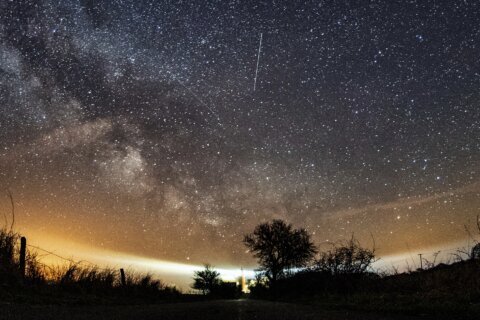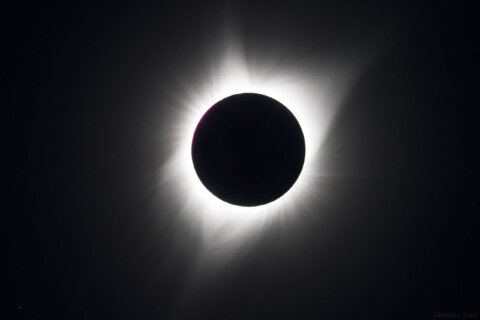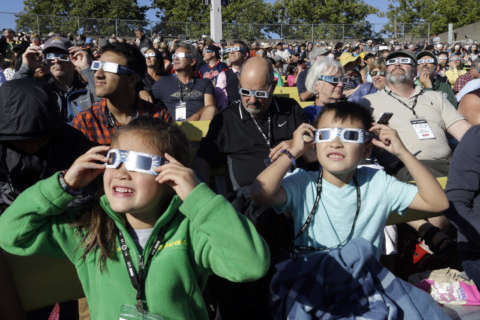For the first time, astronomers have found a disk around a Jupiter-like planet outside of our solar system — the kind of disk where moons could actively be forming.
The disk, known as a circumplanetary disk, was discovered around an exoplanet known as PDS 70c. It’s one of two massive planets similar to Jupiter that orbit a star 400 light-years from Earth.
An international group of astronomers found the disk while observing the planetary system with ALMA, or the Atacama Large Millimetre/submillimeter Array of telescopes in Chile.
The diameter of the disk is large enough that it spans the distance from Earth to the sun and it contains enough mass to form as many as three satellites the size of our moon. The disk is 500 times larger than the massive rings around Saturn.
Researchers thought a moon-forming disk may exist around this exoplanet based on previous findings, but it was difficult to distinguish it from the surrounding space environment. Now, the researchers have confirmed its presence with their unambiguous detection.
The study published Thursday in the The Astrophysical Journal Letters.
“Our work presents a clear detection of a disc in which satellites could be forming,” said Myriam Benisty, lead study author and a researcher at the University of Grenoble, France, in a statement. “Our ALMA observations were obtained at such exquisite resolution that we could clearly identify that the disc is associated with the planet and we are able to constrain its size for the first time.”
While these findings will help scientists learn more about how moons form in young star systems, they also reveal more about planet formation.
Planets are born when they form from the gas and dust in disks that circle around stars. They grow larger as they take in more material from the disk around the star. Sometimes, this causes a planet to have its own disk of material around it that feeds planet growth.
“These new observations are also extremely important to prove theories of planet formation that could not be tested until now,” said Jaehan Bae, study coauthor and a researcher from the Earth and Planets Laboratory of the Carnegie Institution for Science, in a statement.
The gas and dust in this circumplanetary disk can also grow independently as materials within the disk collide, resulting in the creation of moons. But astronomers still don’t know all of the details when it comes to the birth of planets and their moons.
The two exoplanets in the system, PDS 70b and PDS 70c, were first discovered using the European Southern Observatory’s Very Large Telescope in Chile in 2018 and 2019. And these exoplanets are still forming, which allows astronomers a unique opportunity to study and observe them as they — and potential moons — form.
The latest ALMA observations show that the other Jupiter-like planet in the system, PDS 70b, does not have its own disk, which means that the other planet likely stole that material for itself.
Future observations of the system will allow astronomers a better 3D look at PDS 70c.
“More than 4000 exoplanets have been found until now, but all of them were detected in mature systems. PDS 70b and PDS 70c, which form a system reminiscent of the Jupiter-Saturn pair, are the only two exoplanets detected so far that are still in the process of being formed,” said Miriam Keppler, study coauthor and researcher at the Max Planck Institute for Astronomy in Germany, in a statement.
This research is also intriguing to astronomers because exomoons, or moons located around planets outside of our solar system, have proven elusive so far. Detecting exoplanets is difficult; trying to find moons around them is even more arduous because they are smaller and fainter.
However, finding disks where these moons could form around exoplanets is an exciting new way of studying these satellites — and could even help scientists understand more about how our own moon formed.
“In the last two decades, we have discovered planet-forming disks around young stars,” said Thomas Henning, study coauthor and Max Planck Institute for Astronomy director, in a statement. “Now we are taking on the new challenge of studying the disks around young planets. Our ALMA observations of circumplanetary disks are a big step in this direction.”
The-CNN-Wire
™ & © 2021 Cable News Network, Inc., a WarnerMedia Company. All rights reserved.







